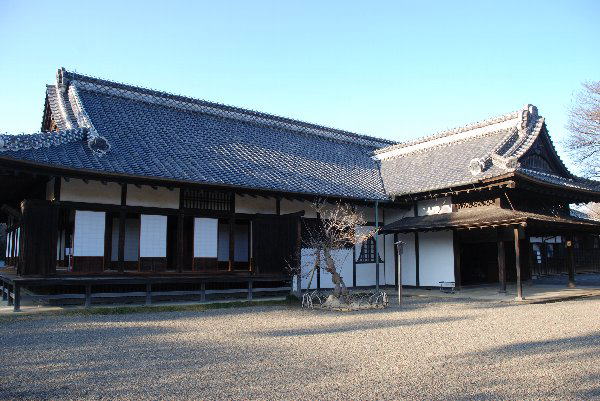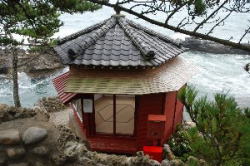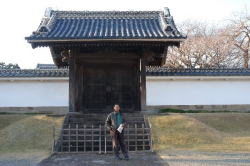074. The Mito-Tokugawa Clan’s school called the Kohdoh-kan

|
|
| archives 102 | digital walking | english | |
|
|
|||
| home | old home | table | |||
|
|
|||||
074. The Mito-Tokugawa Clan’s school called the Kohdoh-kan |
||||
 |
||||
This is a photo of the Mito-Tokugawa Clan’s school called the Kohdoh-kan. This school was established by the 9th Mito-Tokugawa Clan Nariaki in 1841. It’s said that Yoshinobu who had been ascended to the 15th Tokugawa Shogunate later had received gifted studies in here during his childhood. Afterward, when Yoshinobu had stepped down from his nobility as the last Shogunate in Yedo period because of the Meiji Restoration, he had spent his time in this sanctuary called the Shizen-do to show respect for the new Meiji Government. Also it’s said that one of the Japanese doctrine called the Mito Learning was established at the this school by school’s thinkers and the principle of it’s thought so called advocating reverence for the Emperor and the expulsion of foreigners ( Son-Oh-Joh-I in Japanese) had some effects on the Meiji Restoration. Now, we my teacher Babu-san and me planed to visit this Mito city in Ibaraki. Babu-san said that in Ibaraki prefecture, the Japanese Natto food wrapped in the straw containers and the anglers fish cuisine served boiling in a pot, are the best foods for travelers, although I don’t know where he get those particulars from. It is a little funny since he is usually chatting that he is weak on those Japanese Natto food and the Shohtyu-sake maid from sweet potato because these are having strong smell. What on the earth did the Japanese begin to eat such a queer food “the Natto” in any place and any time? Fortunately, we had time to drop in at the Mito-Natto shop that was the oldest plant in Mito city. As a result, it seems like we both have became the Natto specialties who had been well informed about. Personally speaking, I have had the knowledge of the Natto from D. Agr. Ohta’s book titled “The maintaining our health by natto food”, in which it is described the Natto’s details, for example it’s histories, producing district, strong points as food, efficacy, making or cooking method and so on. Also, recently I have believed beyond doubt that the Natto has scientifically high ranked position as our food since I met the book named “The pleasure of the Natto” written by distinguished professor Dr. Koizumi who specializes in fermentations. By the way, I’d like to show my own method of having the Natto. That’s a just simple way like this. First I prepare some warmed rice, a raw egg, some natto and others, then put them into rice bowl (a little bigger one) and stir thoroughly with spoon not chopsticks. I have some more details, what other auxiliaries put in, what season with, how to stir and so on, but it would be better to leave out describing of it because these are personally belonging to my own. Speaking of those tastes in Dr. Koizumi’s style, I could not help admiring those sticky thick slick slippery feelings when it harmoniously comes into my stomach through the throat. Once this way had been customary in my home, there had been the picture that three our children had been holding each rice bowl and spoon at the morning table. I’ve never heard that they took a dislike the natto food even if they grew up. I’m sure the infant experiences would have an effect on them. I’m now chuckling to myself that the Natto culture at least may be inherited to next generation in our family. Anyway, I believe that these are actually the human-friendly foods. And it can tell distinctly that the custom of having the natto food is unmistakable one of Japanese culture. In this trip, Babu-san may have deeply recognized this different natto food as indispensable Japanese culture though he had not the infant experiences. |
 |
 |
|
|
| home | old home | table |